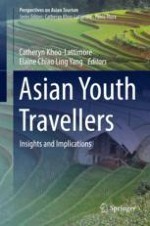2018 | OriginalPaper | Chapter
9. Determinants of Travel Intention Among Asian Visitors at the Cultural Creative Parks: Perspective from Theory of Planned Behavior
Activate our intelligent search to find suitable subject content or patents.
Select sections of text to find matching patents with Artificial Intelligence. powered by
Select sections of text to find additional relevant content using AI-assisted search. powered by
